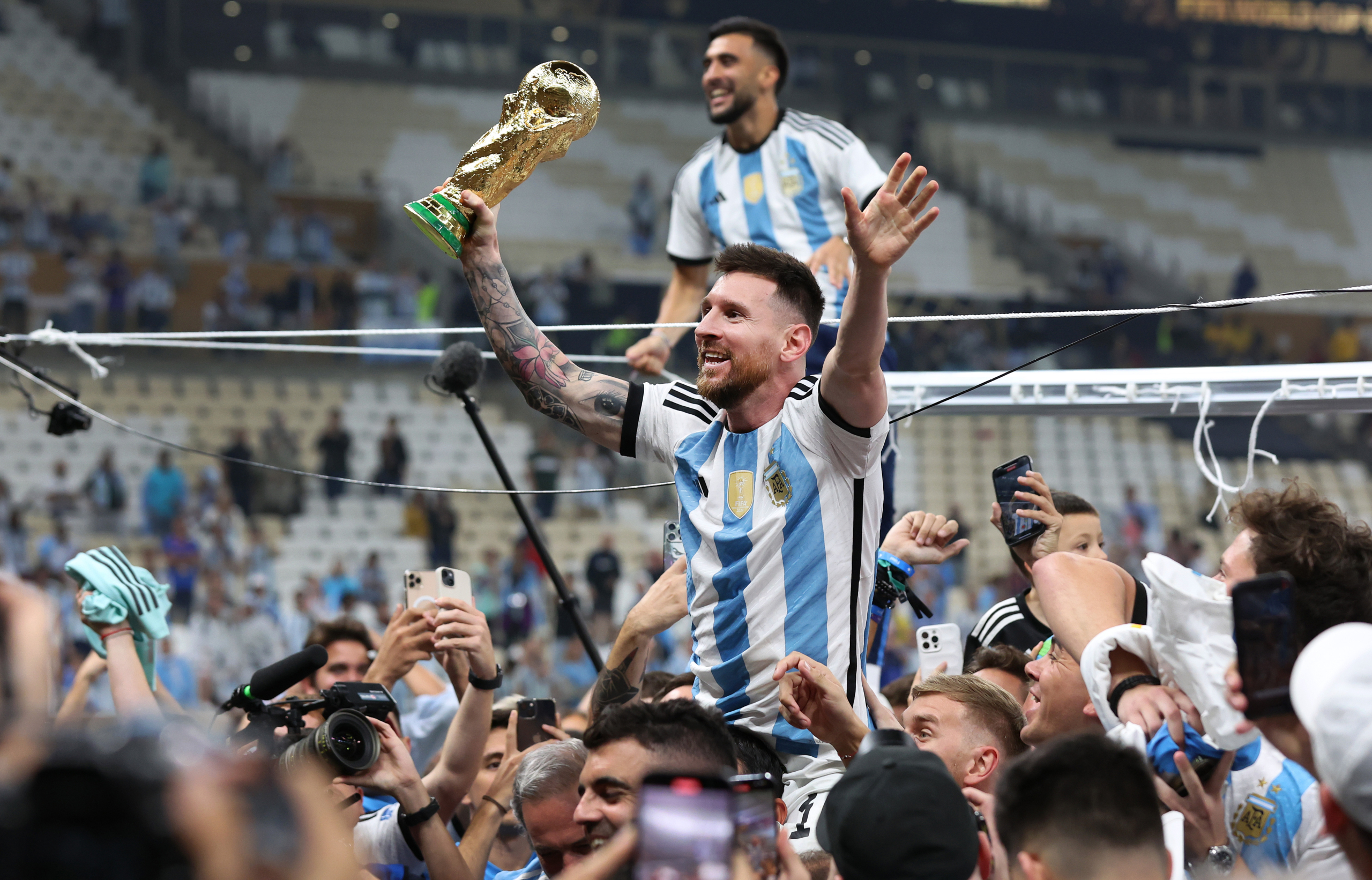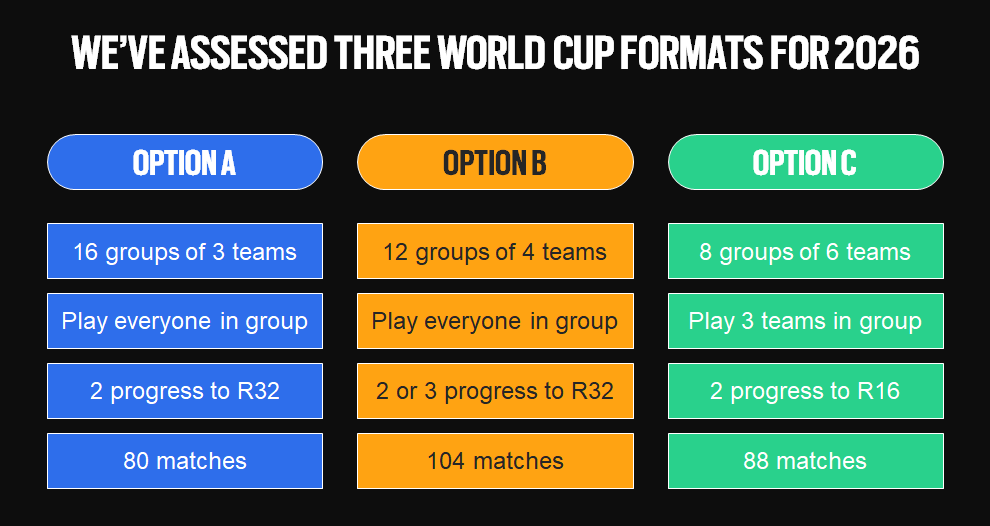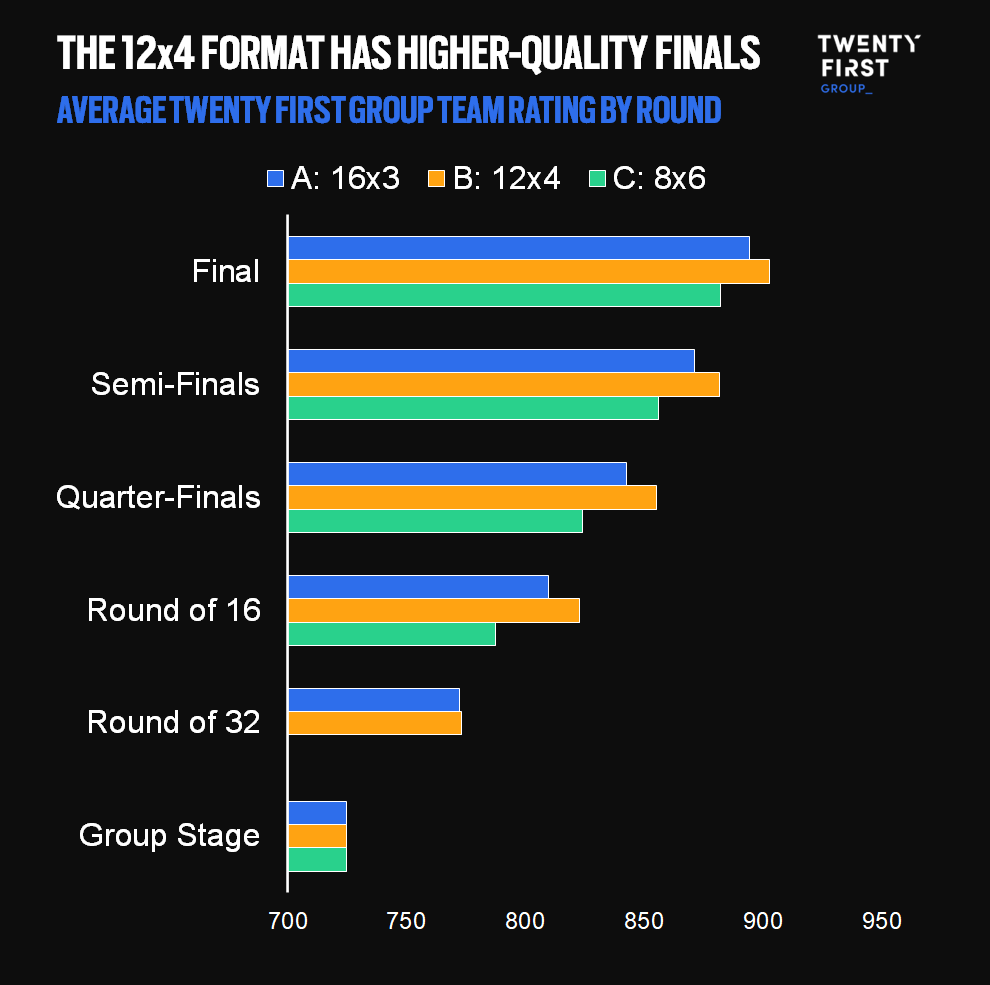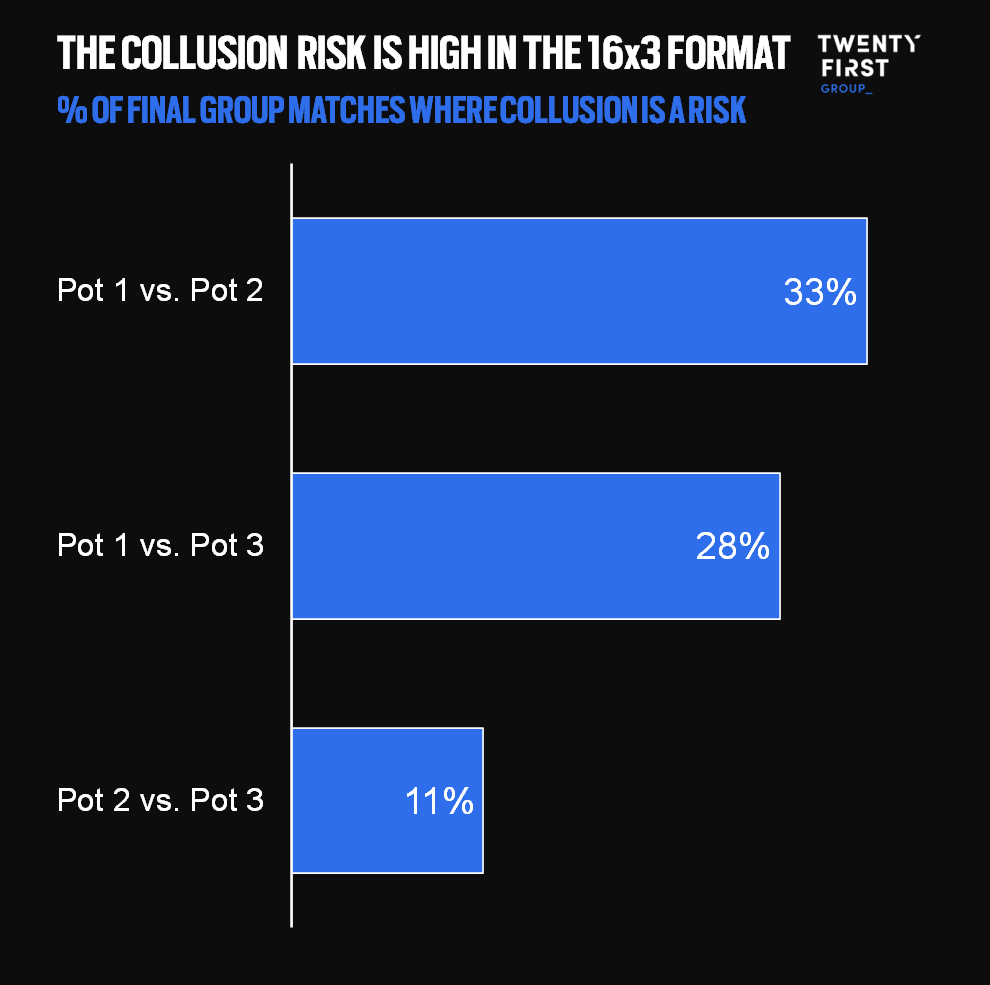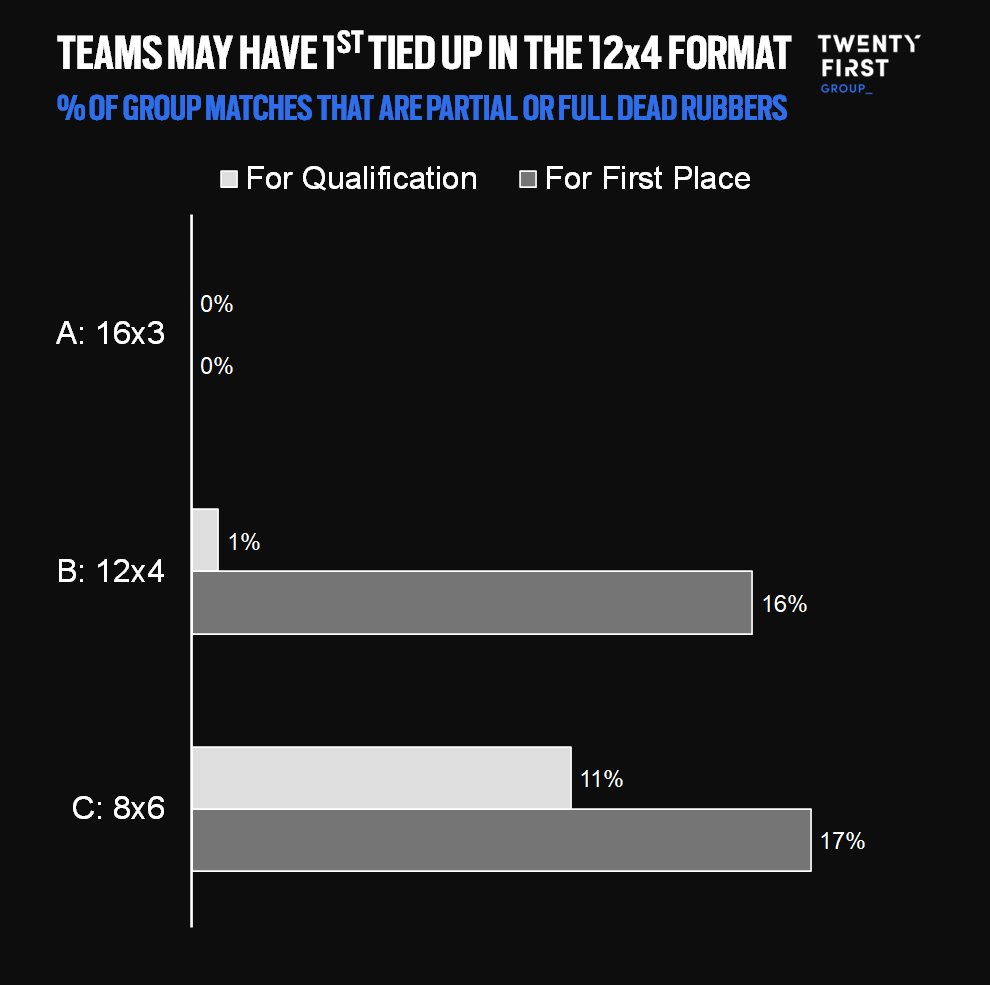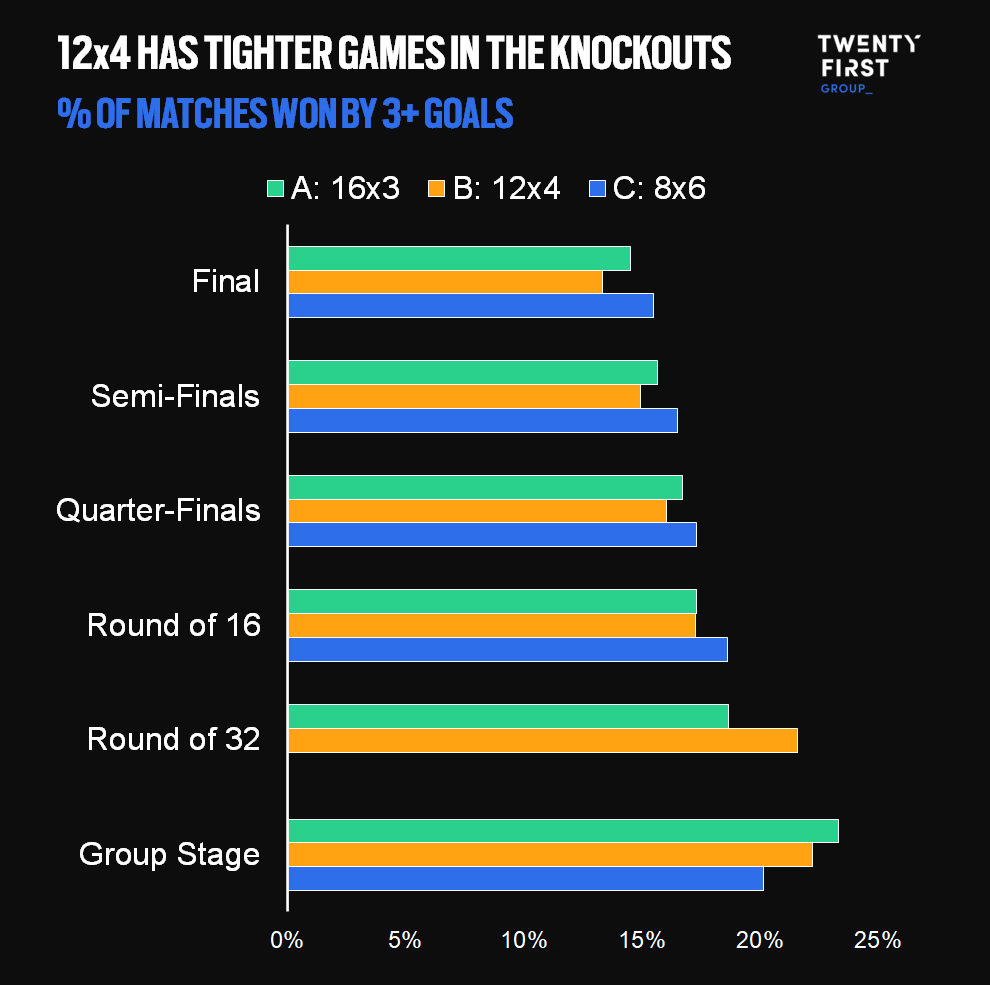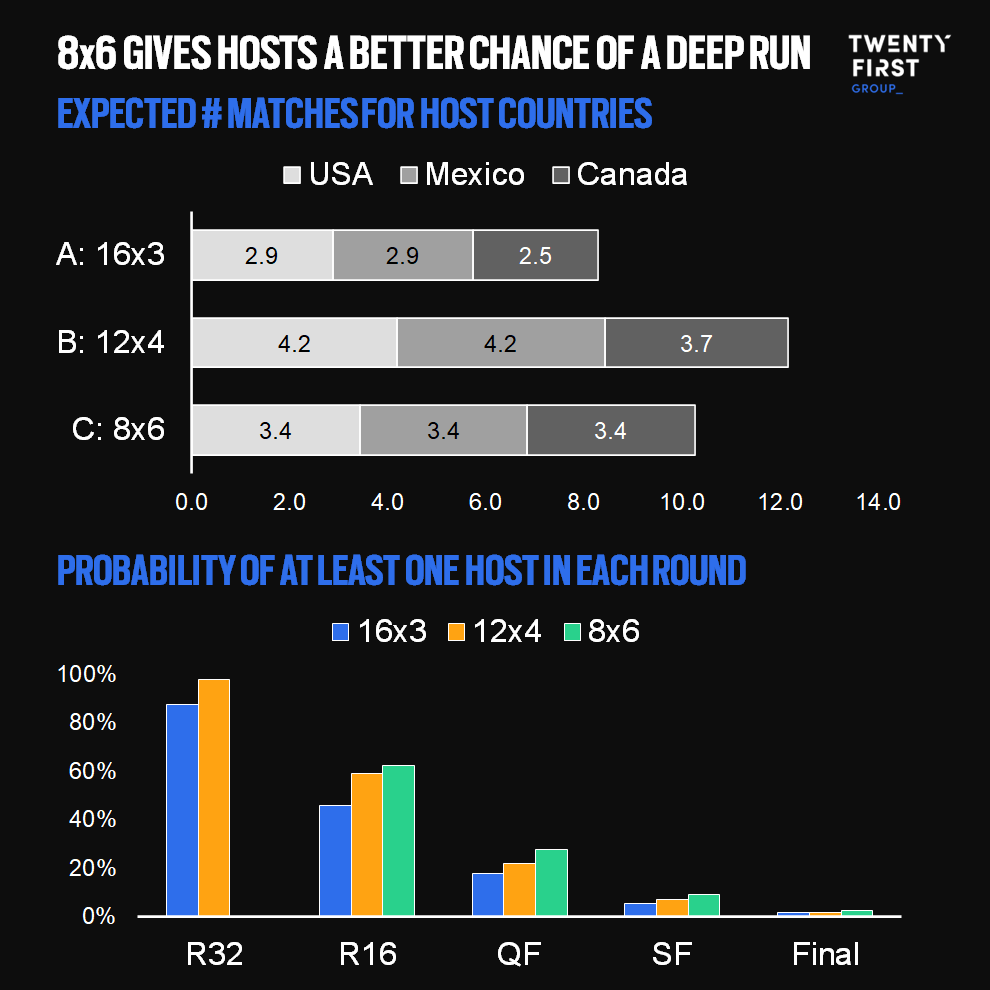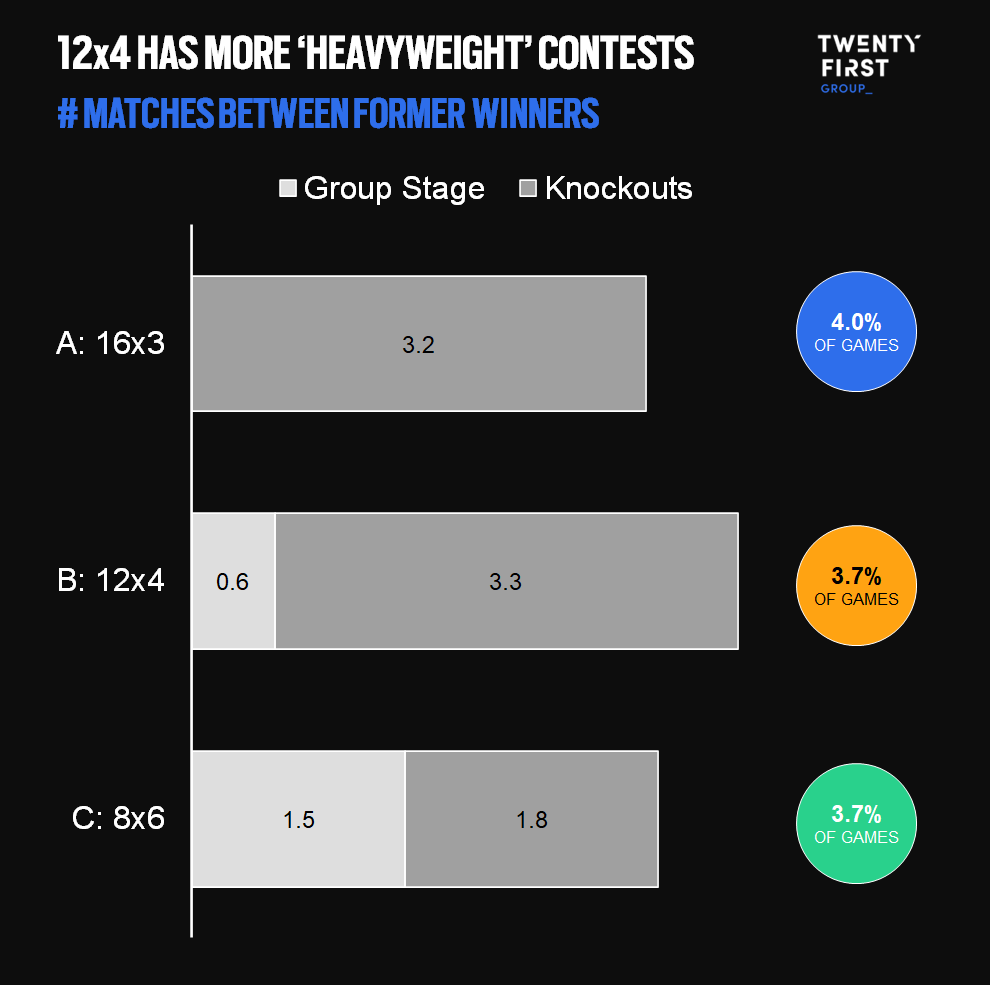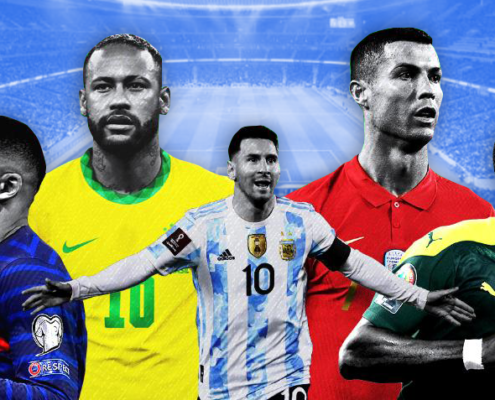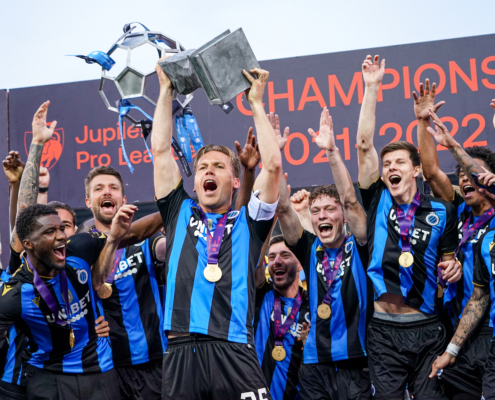Thought Leadership
What could an expanded 2026 FIFA World Cup look like?
11 MIN READ
Thought Leadership
Inspired by what you’re reading? Why not subscribe for regular insights delivered straight to your inbox.
The drama of the 2022 FIFA World Cup has led many to both question the merits of an expanded tournament in 2026, and also call out the problems of finding a suitable format for a 48-team competition.
This debate is not merely academic. At Twenty First Group, we are firm believers that the success of the sporting product drives commercial success. A World Cup that is poorly designed risks putting off fans, broadcasters, and sponsors.
We break the sporting success of the FIFA World Cup into three categories:
- Quality: fans want to see the best play the best
- Jeopardy: fans want genuine uncertainty of outcomes
- Connection: fans want to care about the narratives
Our Intelligence Engine can help evaluate how different formats deliver against each of these pillars. FIFA are contemplating two formats: 16 groups of 3 teams and 12 groups of 4 teams. We’ve also assessed a third: 8 groups of 6 teams in a Swiss-style fixture list (like the one to be used in the UEFA Champions League from 2024), where teams play just 3 opponents in their group. This format has the benefit of keeping a similar number of fixtures as option A, but avoiding the issues of potential collusion (analysed below).
Quality
A mix of more games and that 75% of teams in some groups will progress means that the 12×4 format reduces the chance of early upsets. This in turn means that it is most likely to deliver the highest-quality finals. Our models suggest that that there’s a 55% chance that one of the four ‘best’ teams win under this format, compared to closer to 50% under the other two formats.
Jeopardy
Jeopardy proved central to the 2022 World Cup’s on-field success. The final group games were short on dead rubbers, while many games were also evenly-matched and tense throughout.
A major issue with the 16×3 format is the possibility for collusion between teams to ensure both qualify ahead of the third team in the group. Our modelling suggests that this risk is particularly high when the two highest seeds play in the final round of games; the fears that a repeat of the ‘Disgrace of Gijón’ could materialise are well-founded.
The upside of this format is that it guarantees no dead rubbers: teams will always be playing for something in their final group game. The 12×4 format also almost always guarantees that there is qualification on the line in every game, though the battle for first place is more often tied up.
The World Cup organisers should also seek to maximise jeopardy in the games with the highest stakes, and our simulations suggest that matches in the latest stages of the competition are the least likely to be one-sided and won by 3+ goals in the 12×4 format.
Connection
The success of World Cups depends in part on the success of the host countries. An early elimination can take energy out of the tournament, and dilute the connection that visiting fans have to the host. Different formats offer different opportunities for hosts, with the Swiss-style 8×6 format giving a better than 1-in-4 chance that one of the quarter-finalists is a host nation.
Fans also tend to watch heavyweight matches in higher numbers, with the 2022 final demonstrating the value of two of the game’s giants meeting in high-stakes games. The 12×4 format excels here, partially due to the additional number of games, though it also has a slightly higher likelihood of a ‘heavyweight’ final (42%, compared to 39% for option A and 32% for option B).
Conclusion
Our analysis illustrates the folly of considering a 3-team group stage for the 2026 World Cup. The format is outperformed by the 4-team group format in delivering quality, jeopardy, and connection, and also underperforms against a 6-team group format that maintains a similar number of matches. The differences are not trivial, and highlight the importance of properly assessing competition formats. For 2026 to follow up 2022’s sporting success, designing the right competition will be critical to not letting down fans and commercial partners.
If you would like to find out more about our competition intelligence services please get in touch with Ben Marlow.
